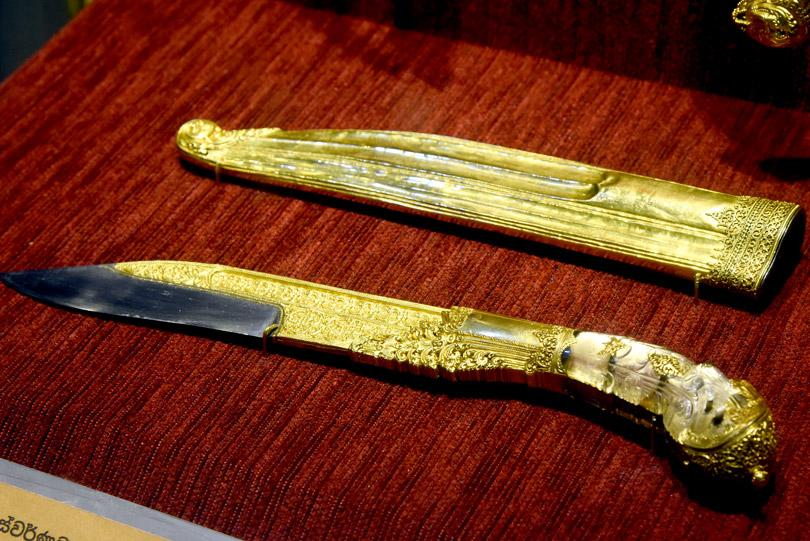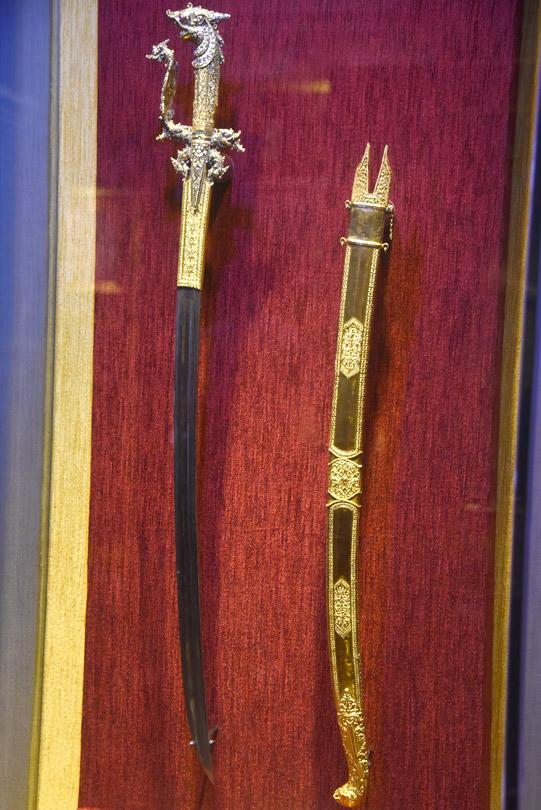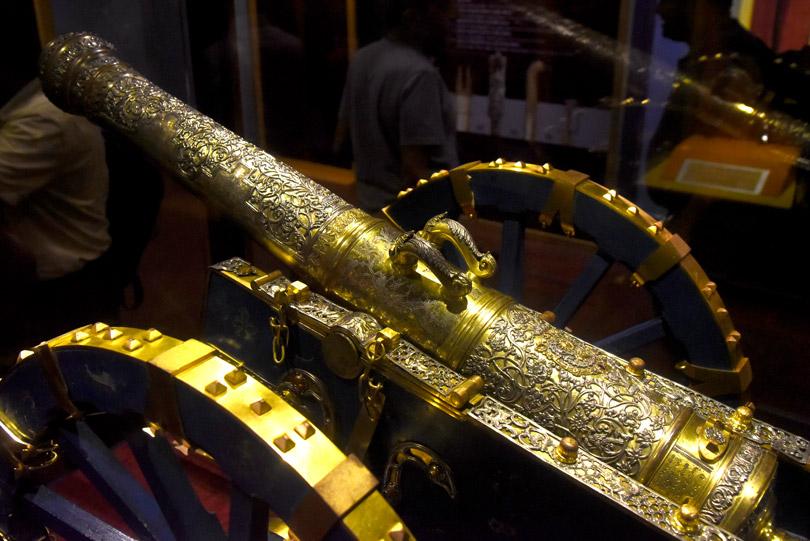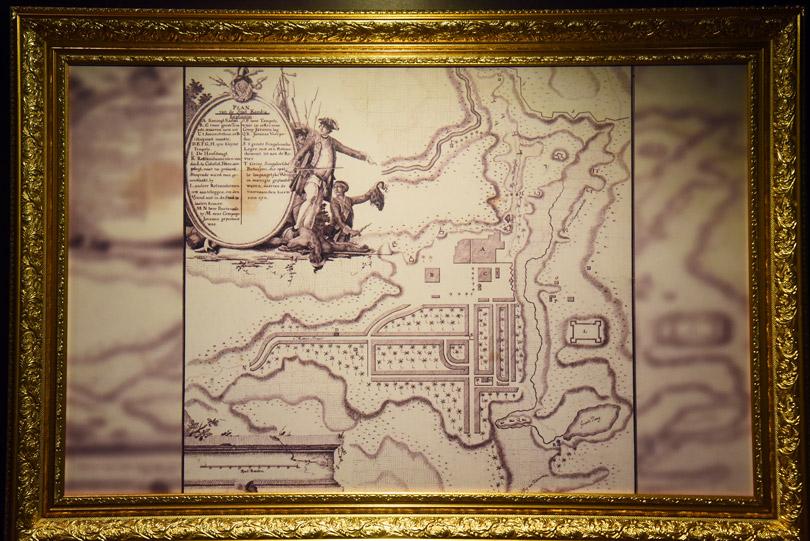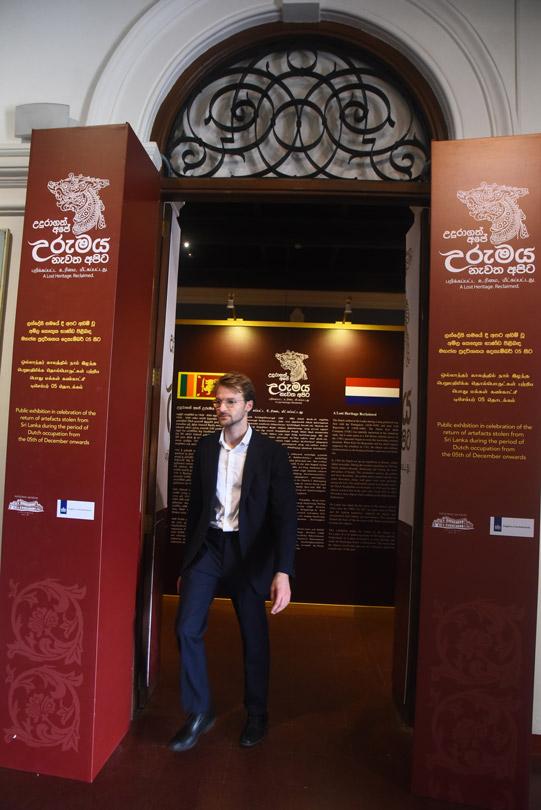Reply To:
Name - Reply Comment
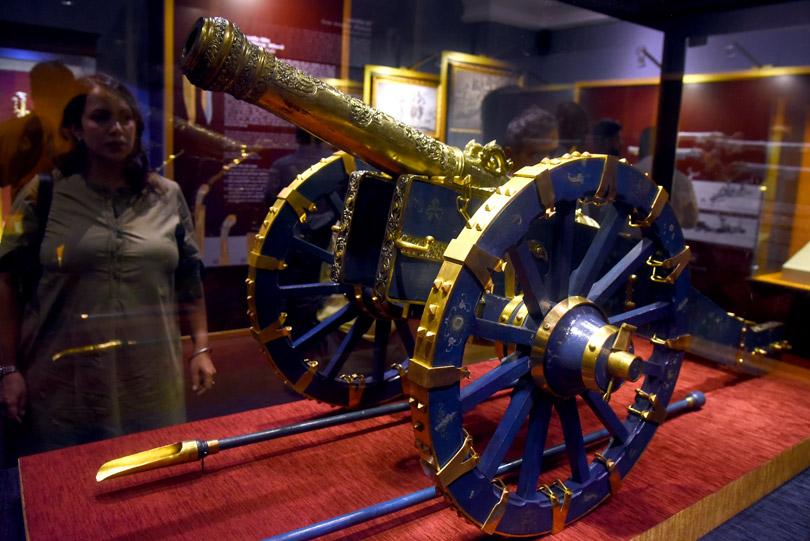
The Dutch settled in Sri Lanka during a long period of war, first with the Portuguese (1638-1658) and later with Rajasimha II (1658-1688).
The Dutch East India Company (VOC) was initially interested in the cinnamon trade, but it soon acted as a full blown colonial power. In the 1750’s peasants began to resist the increasing colonial demands.
When Kirti Sri Rajasinha and his chiefs openly supported the rebellion in 1762, the Dutch sent military reinforcements to the Kandyan borders and soon war broke out.
In 1764 the Dutch set up an expedition to Kandy, which failed miserably. During the second expedition in 1765 the Dutch pushed through, destroying and looting the town and palace of Kandy.
The ceremonial cannon, the golden and silver Kasthane, the golden pihiya (Knife) and the two maha thuwakku, (large wall guns) were most probably among the loot. The ceremonial cannon was already sent to the Dutch Stadtholder as war trophy in 1765 and the other objects reached him in the years after. From 1927 to 2023 November, these objects were exhibited at the Rijksmuseum in the Netherlands.
Sri Lanka had requested for the return of the objects several times since the 1960’s. In 2021 an expert team of Dutch and Sri Lankan researchers analysed the objects and reconstructed their history and provenance. This research formed the basis of the decision of the Dutch government to return the objects.
This exhibition marks the return of the objects to Sri Lanka. It is of great importance to Sri Lanka and the Netherlands as it pays recognition to past injustice and marks the beginning of new collaborations. The stories that the objects reveal may open up new dialogues about the complexities of the past. (Pix by Kithsiri de Mel)






